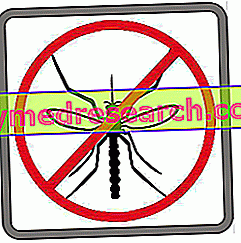Message sent by: Max
Hi Max,
before talking about vegetable proteins, let's review some very important concepts to establish the quality of a protein source:
- BIOLOGICAL VALUE: represents the amount of nitrogen actually absorbed and used net of urinary and faecal losses. The reference protein is that of the egg which has a VB of 100%
- PROTEIN EFFICIENCY REPORT (PER) : indicates the weight increase in grams for each gram of ingested protein (3.1 for milk; 2.1 for soy)
- DIGERIBILITY (D): ratio between ingested and absorbed nitrogen (in descending order wheat, milk and soy)
- ESSENTIAL AMINO ACIDS: The essential term indicates the body's inability to synthesize these amino acids from other amino acids by biochemical transformations. The amino acids involved in protein synthesis are 20 and among these 20 eight are essential [leucine, isoleucine and valine (BCAA), lysine, methionine, threonine, phenylalanine, tryptophan] during growth two other amino acids, arginine and histidine become essential.
- CHEMICAL INDEX is given by the ratio between the quantity of a given amino acid in a gram of the protein under examination and the quantity of the same amino acid in a gram of the biological reference protein (of the egg). The higher this index, the greater the percentage of essential amino acids.
- AMINO ACID LIMITANTE: represents the essential amino acid present in the lowest concentration compared to the requirement, this deficiency prevents optimal use of the other amino acids for protein synthesis.
In general, the protein quality of foods of animal origin is superior because they contain all the various essential amino acids in the
The lower quality of vegetable proteins is instead due to a deficiency of one or more essential amino acids. This amino acid, as we have seen, is called a limiting amino acid.
Cereals are for example deficient in tryptophan and lysine, an essential amino acid whose deficiency can lead to a deficiency of vitamin B3 (niacin).
Legumes, very rich in fairly good quality proteins, are deficient in sulfur amino acids (methionine and cysteine) which are important for the growth of hair, hair and nails and for the synthesis of glutathione, a powerful antioxidant able to protect our cells from oxidative stress (free radicals)

Pasta and legumes is an example of an excellent combination since the amino acids that pasta is lacking are supplied by beans and vice versa.
To find out what the amino acid content of the various foods is I recommend reading the following article: AMINO ACID PROFILE OF FOOD.
| Essential amino acids and their sources of plant origin | |
| amino acid | Plant origin |
| Phenylalanine | Wheat germ |
| isoleucine | Poor sources available |
| Histidine | Wheat germ |
| Leucine | Wheat germ |
| Lysine | Various legumes |
| Methionine | Seeds in general, sunflower seeds, nuts |
| threonine | Legumes, only marginally cereals |
| Tryptophan | Almonds, poor in legumes and cereals |
| Valine | Wheat germ |
| Protein Associations | |||
| Plant foods | Limiting amino acid | Complementary food | Example of combination |
| Wheat | Lysine, threonine | legumes | Pasta and beans |
| Soy and other legumes | Methionine | Dried fruit and seeds | Rice and peas |
| Corn | Tryptophan, lysine | legumes | Tortillas and beans |
| vegetable | Methionine | Dried fruit and seeds | Salad and walnuts |
In any case it should be pointed out that all the concepts expressed so far must be interpreted with rationality:
- If it is true that vegetable proteins are deficient in some amino acids it does not mean that these are not sufficient to cover the body's protein needs.
- If it is true that the limiting amino acids prevent the optimal use of the other amino acids for protein synthesis does not mean that in these cases the protein synthesis is heavily compromised.
- If it is true that the lack of combination of vegetable proteins can cause protein deficiencies in the long run, this argument is not valid in the short term. If, for example, I dissociate cereals and legumes in two separate meals, the organism is perfectly capable of regulating protein synthesis by implementing the amino acids limiting those found in endogenous reserves. If, instead, only one type of vegetable protein is consumed for long periods of time (for example only cereals) the stocks of free amino acids are "depleted" and there is inevitably a protein deficiency (negative nitrogen balance).
Therefore, there are no particular contraindications in consuming mainly plant-based foods as happens during the summer period. However, it is important that the diet includes the consumption of a wide class of plant-based foods (dried fruit, vegetables, legumes, etc.) but also some animal food (eggs, milk, meat, etc.). In fact, an exclusively vegetarian diet, even if sufficient from a protein standpoint, could be deficient in vitamins (B12) and minerals such as iodine, iron and calcium, and essential fatty acids.
Do you want vegetable protein?
Enter the vegan recipes section and discover many tasty alternatives to animal proteins:
- Homemade Seitan
- Mopur made at home
- Homemade wheat muscle
- Homemade tempeh
- Vegetable fillet with green pepper
- Vegetable escalopes with mushrooms
- Eggplant meatballs and vegetable meat
- Chickpeas Hamburger
- Vegetable cheeses
- All recipes based on vegetable meat
Carbonara Vegan (Finta Carbonara)
X Problems with video playback? Reload from YouTube Go to Video Page Go to Video Recipes Section Watch the video on youtube



